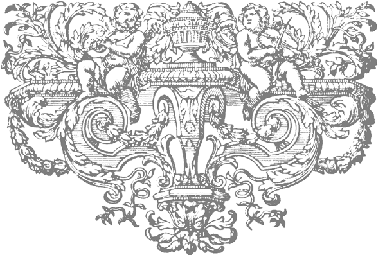A Franco-Flemish double-manual harpsichord,
![]()
Detail of the painting of the head of the central putto
The whole of the front flap, cheek, bentside and tail painting constitutes the series 'The Triumph of Love'. Because these surfaces have been exposed to damages in transport and carriage, they have suffered badly at the hands of numerous previous 'restorers' and improvers. But fortunately the head of the putto depicted here has suffered less than the others and shows the delicacy and competence of the hand of the brilliant painter who was initially responsible for the whole of this part of the decoration. The left hand of this putto can only be described as distorted and gross as the result of crude, unskilled overpainting and touching up. Although even in the head of the putto, the re-touching and over-painting is all too apparent, many important details remain: the highlights and detailing of the hair (except in the hair just above his forehead) and of the wings, and the painting of the ear with the highlight just at the top of the ear lobe. But what is particularly noteworthy is the painting of the light reflected back off the body of the archer putto onto the face of this little brunette putto. This shows the skill of the painter in its highest and most sophisticated form. Although highlighted with a flood of light, the face is painted with a dark shadowy outline to distinguish it from the flesh tones of the body of the archer putto just behind. In my view only a painter at the height of his/her powers could have painted this. Christophe Huet is one such painter!
What is needed now is to remove the overpainting and re-touchings from the faces and bodies of the other putti to see if there is evidence of this skill and technique lying hidden under the rest of the over- painting and retouching of 'The Triumph of Love'.
![]()
Important
Features of this harpsichord
![]()
A brief history of the musical and decorative states of the Franco-Flemish harpsichord
![]()
Details of
the original state of the instrument
![]()
Details of the eighteenth-century states of this harpsichord
Details of the modern history of this harpsichord
![]()
Problems encountered in the ethical restoration of this harpsichord
![]()
![]()
Go back to the main page of this section
![]()
This page was last revised on 20 November 2021.
